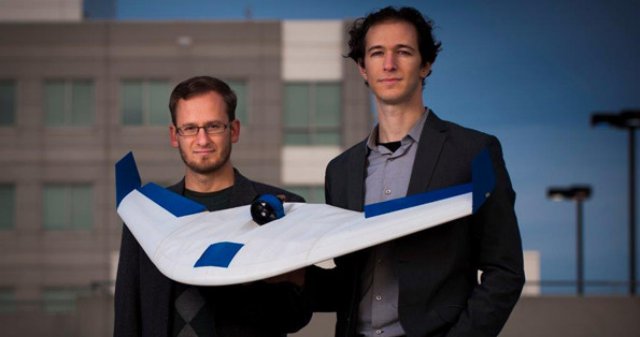Once, and not so long ago, the armed forces had all the best toys. America’s information-technology industry was powered by military budgets, and consumer electronics fed on the scraps. Now, the roles are being reversed. And there are few better illustrations of that reversal than an unmanned aircraft called Razor.
Raven, the American armed forces’ workhorse small UAS (it has a wingspan of 1.3 metres and is used for reconnaissance) is built using conventional techniques by AeroVironment, a Californian firm, and is controlled by bespoke software. It costs $76,000 a pop. Razor, an experimental aircraft designed by the MITRE Corporation (a not-for-profit organisation that manages government research programmes) and the University of Virginia, is turned out to order by 3D printers and is controlled by an Android smart phone loaded with freely available apps. It costs $2,000.
Razor is the brainchild of Michael Balazs and Jonathan Rotner. It grew out of a project Dr Balazs worked on two years ago to rebuild an old military robot. He found this challenging because the machine’s proprietary electronics and custom software were both outdated. That started him thinking about standardising military robots by using off-the-shelf components and open-source programs to make them. And the leading source of both was and remains smart phones.
These days, even a run-of-the-mill phone has GPS built into it, meaning it can be used for navigation. Pretty well every phone also has a video camera, so a drone equipped with one could see where it was going, and what surrounded it. And any mobile phone, by definition, has a radio transmitter and receiver. These, and any other goodies it might possess in the way of apps that have been loaded onto it, can be connected to other electronic devices—such as those that might steer and operate a robot—by what is known as a breakout board.
Dr Balazs, Dr Rotner and their colleagues at the University of Virginia, led by David Shefler, first tried the idea on radio-controlled toy cars. Their Android cars were able to communicate with each other and thus co-ordinate their efforts. In one demonstration, for example, the cars explored a sports stadium without human guidance, using their instruments to build up a map of the stadium’s temperature and the intensity of the sunlight in different parts of it. Programming the ability to detect such things into the cars was easy because hundreds of thousands of Android apps are available. It was just a question of picking the right ones. And if something needed tweaking, because it was almost, but not quite, suitable, that was not usually too hard.
Having proved their point in two dimensions, the researchers were then ready to add the third and build an Android-powered drone. If bought from a contractor, military-grade drone hardware is expensive. They therefore printed their own.
Their first attempt, Wendy, required 17 separate printing operations, had a wingspan of two metres and took a week to come off the press. Wendy mark I crashed after getting caught in a crosswind, but this gave Dr Balazs and Dr Rotner a chance to see which pieces of her structure had best survived the impact. Using this knowledge they carried out a swift redesign in the field and Wendy mark II was ready for them when they returned to base a few days later.
Wendy’s successor, Razor, is printed in a single run and is ready to fly in a day and a half. It has a wingspan of a metre and can cruise at 70kph for 40 minutes. And Razor has real reconnaissance capability. To show what it can do, the team had one sweep over a wide area taking aerial pictures, which they then stitched together into a high-resolution map using (of course) free software.
Whether America’s armed forces will take up Dr Balazs’s and Dr Rotner’s invention remains to be seen. It will certainly need more testing. But, from the American point of view, it also raises worrying questions. 3D printers are becoming commonplace. Smart phones are cheap. And apps are abundant. It must surely be the case that others, without the Pentagon’s massive procurement budget and therefore droneless at the moment, will be looking with interest at what MITRE has achieved.
Photo: Mitre
Source: The Economist

